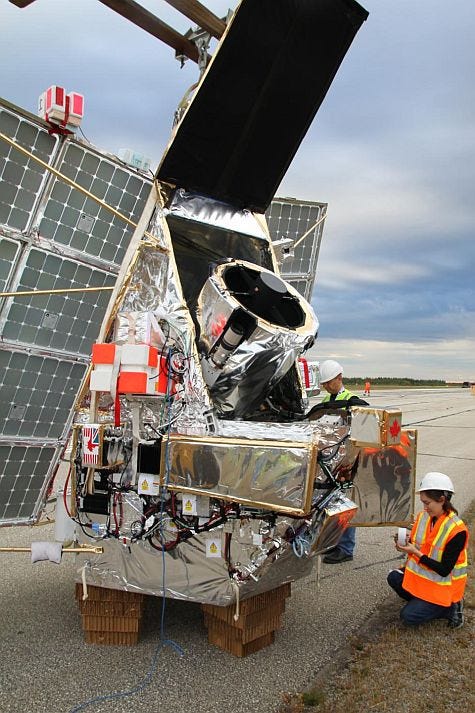Carried on a helium balloon the size of a football stadium, a revolutionary new telescope could forever change the way we carry out our explorations of the Cosmos.
Flying at an altitude of 40 km (25 miles) over the ground, above 99.7 percent of the atmosphere of Earth, SuperBIT would carry out observations free of the vast majority of the atmosphere which can affect astronomical observations.

Designers from Durham, Toronto, and Princeton University, along with colleagues from the Canadian Space Agency, hope to deploy SuperBIT in April 2022 for the first time in full operating conditions. If all goes according to plan, this half-meter wide telescope should rival the Hubble Space Telescope in its observations of the heavens.
Twinkle, Twinkle, Little… DARN YOU!
After a journey of up to billions of years, light from distant bodies is jostled in its last moments by the atmosphere of Earth. Ground based astronomers have developed adaptive optics, warping mirrors in their telescopes thousands of times a second to overcome the atmospheric twinkling.
However, this system is expensive and complex, requiring a large laser to measure atmospheric turbulence, and significant computer power and an instrument capable of carrying out the task, limiting this technique to large observatories.
Another option is to launch telescopes into space, such as the James Webb Space Telescope. Although this relieves telescopes of the deleterious effects of atmosphere, it makes repair of the instruments far more difficult or impossible.
A balloon-based telescope offers the best of both worlds — the telescope is lifted above most of the atmosphere during operations, but can easily be landed for repairs on the ground when maintenance is needed.
Didn’t I see this before in Up?
The idea behind flying a telescope on balloons is fairly straightforward, even if the development and operation of such an instrument remains cumbersome.
Another problem keeping astronomers from developing this idea previously is that traditional balloons could only hold onto gas for periods of a few days before losing their buoyancy. This would not allow for long, serious study of distant astronomical bodies.
Recently, NASA developed new superpressure balloons, capable of keeping SuperBIT aloft for months at a time.
As designed, SuperBIT would continually circle the globe, carrying out observations each night, and recharging its batteries each day.
Doing astronomy by balloon has its ups and downs

Spaceborne telescopes usually need to work right the first time (I’m looking in your direction, Hubble), and they are limited to space-qualified equipment which can be years out-of-date by the time of launch. SuperBIT can be continually updated, and will not have the same limitations as space-based telescopes.
Because it can easily land and take off again, the not-quite-space telescope will also be capable of carrying the latest technology. The camera used on the most recent test flight of SuperBIT was purchased just weeks before the flight.
“New balloon technology makes visiting space cheap, easy, and environmentally friendly. SuperBIT can be continually reconfigured and upgraded, but its first mission will watch the largest particle accelerators in the Universe: collisions between clusters of galaxies.” Mohamed Shaaban, a PhD student at the University of Toronto, explains.
This five million dollar mission will, hopefully, provide astronomers with a Hubble-grade instrument at a fraction of the cost of a traditional space telescope.

The Hubble Space Telescope is now repaired, following a monthlong shutdown due to a failure of a chip aboard the orbiting observatory. Despite this success, all missions come to their end (except, apparently, Voyager — those vehicles are the Keith Richards and Betty White of the spacecraft world).
Next, designers are working toward a next-generation SuperBIT, featuring a mirror stretching a meter-and-a-half side-to-side. That instrument would be capable of surpassing the capabilities of the Hubble Space Telescope. (The balloon currently limits developers to a two-meter telescope).
Test flights were successfully conducted of flight and operational systems in 2016 and 2019.
The incredibly low cost of this system could make it possible to fly a fleet of these instruments, offering a chance for astronomers worldwide to utilize Hubble-class telescopes.
Updates on the SuperBIT project were recently delivered at The Royal Astronomical Society National Astronomy Meeting.
This article was originally published on The Cosmic Companion by James Maynard, the founder and publisher of The Cosmic Companion. He is a New England native turned desert rat in Tucson, where he lives with his lovely wife, Nicole, and Max the Cat. You can read the original article here.
Get the TNW newsletter
Get the most important tech news in your inbox each week.






